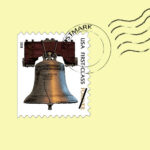 A new case interpreting the Forcible Entry and Detainer Act demonstrates the difference between condominium and landlord evictions
A new case interpreting the Forcible Entry and Detainer Act demonstrates the difference between condominium and landlord evictions
The First District Appellate Court has just published an opinion to Courts of Northbrook Condominium Ass’n v. Bhutani which highlights a major difference between condominium association evictions and traditional tenant eviction cases under the Illinois Forcible Entry and Detainer Act. The Northbrook case involves a condominium association eviction under the forcible entry and detainer statute. Landlords might be interested to know that it is not just they who can take advantage of the Forcible Entry and Detainer Statute to recover possession to land. Condominium associations have a separate right under the FED to file an eviction to collect past due assessments or to obtain possession of real estate owned by a delinquent condominium owner.
In the Northbrook case, the condominium association mailed the required 30 day notice of delinquent association dues to the condominium owner by certified mail. The certified mail was never picked up by the condominium owner and was returned to the association unclaimed. The defendant argued that the court did not have proper jurisdiction because he was never served with the 30 day notice.
The appellate court concluded that the condominium owner did not need to actually receive the notice. The court pointed to the forcible entry statute at 735 ILCS 5/9-104.1(c) which provides:
(c) The demand set forth in subsection (a) of this Section shall be served either personally upon such purchaser or condominium unit owner or by sending the demand thereof by registered or certified mail with return receipt requested to the last known address of such purchaser or condominium unit owner or in case no one is in the actual possession of the premises, then by posting the same on the premises. When such demand is made by an officer authorized to serve process, his or her return is prima facie evidence of the facts therein stated and if such demand is made by any person not an officer, the return may be sworn to by the person serving the same, and is then prima facie evidence of the facts therein stated. To be effective service under this Section, a demand sent by certified or registered mail to the last known address need not be received by the purchaser or condominium unit owner. No other demand shall be required as a prerequisite to filing an action under paragraph (7) of subsection (a) of Section 9-102 of this Act. Service of the demand by registered or certified mail shall be deemed effective upon deposit in the United States mail with proper postage prepaid and addressed as provided in this subsection. (emphasis added)
The Northbrook court said: “However, the Forcible Entry and Detainer Act does not require that a defendant actually receive the 30 day notice to effectuate proper service… Instead, the statute requires only that the notice be sent by certified mail to the last-known address of the owner.”
The court read the plain language of the statute and determined that actual receipt of the notice was not required – only the actual mailing. Landlords are probably well aware that in most eviction courtrooms, a five, ten, or thirty day notice sent by certified mail is generally only deemed valid if the tenant actually signs for the certified mail. In essence, they need to “receive it”. Once the green return card is signed, the landlord might have to prove to the judge that the signature is actually the tenant’s signature. Because of this procedure and the proof problems presented, certified mail is usually pretty ineffective as a means for service of process. I almost always recommend personal service as the most conservative method for serving an eviction notice.
But the Northbrook court said that the condominium owner did not need to receive the notice. Could this also apply to tenant evictions? Could Cook County courts allow a tenant eviction to proceed if the landlord merely sends the notice certified mail? Let’s take a look at the statute: at 735 ILCS 5/9-211:
Service of demand or notice. Any demand may be made or notice served by delivering a written or printed, or partly written and printed, copy thereof to the tenant, or by leaving the same with some person of the age of 13 years or upwards, residing on or in possession of the premises; or by sending a copy of the notice to the tenant by certified or registered mail, with a returned receipt from the addressee; and in case no one is in the actual possession of the premises, then by posting the same on the premises. (emphasis added)
The language of Section 9-211 sure looks similar to the language of Section 9-104.1(c) that was interpreted in the Northbrook case. It differs in one small respect. It says that certified or registered mail can be sent “with a returned receipt from the addressee”. That’s the difference. The plain language says that a condominium association does not have to get a returned receipt – instead, the association only needs to mail the notice in conformity with the statute.
That’s disconcerting for landlords, I am sure, but, that is the way of things. A tenant’s right to possession is not something the law treats lightly. As a result, there are certain protections put in place by the legislature and this is one of them. Certified mail service for landlords is difficult at best and this is one of the main reasons why.
